Background Great progress has been made in identifying hepatitis B surface antigen (HBsAg)positive pregnant women and immunizing their infants with Hepatitis B (HepB) vaccine and Hepatitis B immune globulin (HBIG) to prevent vertical infection, but there are still infants who acquire hepatitis B virus (HBV) infectionMission To promote national and international collaboration to promote clinical care and research in the field of the hepatitis B virus (HBV) To improve awareness among health care professionals and the public regarding the prevention of HBV, screening high risk populations for HBV and management of chronic HBV based on AASLD Guidelines AASLD / FDA DILI Conference Digestive Disease Week Emerging Topic Conference Current Challenges in Clinical Management and Drug Development in NASH Emerging Topic Conference Chronic Hepatitis B from the Population to the New Molecules and Back Frequently Asked Questions About The Liver Meeting® Fundamentals of Liver Disease LiverLearning

Evolving Options For Hbv Therapy Navigating The New
Aasld hepatitis b guidelines 2019
Aasld hepatitis b guidelines 2019-(3) guideline policies of the AASLD;AASLD Guidelines for Treatment of Chronic Hepatitis B Norah A Terrault,1 Natalie H Bzowej,2 KyongMi Chang,3 Jessica P Hwang,4 Maureen M Jonas,5 and M Hassan Murad6 See Editorial on Page 31 Objectives and Guiding Principles Guiding Principles This document presents official recommendations of the American Association for the Study of




Hepatitis B Virus Advances In Prevention Diagnosis And Therapy Clinical Microbiology Reviews
The 18 updated guidance on chronic hepatitis B (CHB) includes (1) updates on treatment since the 16 HBV guidelines (notably the use of tenofovir alafenamide) and guidance on (2) screening, counseling, and prevention;And Designing Practice Guidelines(2);AASLD Guidelines for the Treatment of Hepatocellular Carcinoma Julie K Heimbach,1 Laura M Kulik,2 Richard S Finn,3 Claude B Sirlin,4 Michael M Abecassis,5 Lewis R Roberts,6 Andrew X Zhu,7 M Hassan Murad,8 and Jorge A Marrero9 Guiding
Dr Marina Nunez was a member of the NIHCDCHIVMA/IDSA Opportunistic Infections guidelines Hepatitis B Subject Group from 10 to 17 She currently serves on the Infectious Disease Society of America (IDSA) Standards and Practice Guidelines and on the AASLD Hepatitis B Special Interest Group's Education SubcommitteeClinical Guidelines All children, teens and adults living with chronic hepatitis B infection should be monitored regularly since they are at increased risk for developing cirrhosis, liver failure, or liver cancer Early detection of a serious liver problem increases one's treatment options and improves longterm health outcomesThe patients were classified into immunetolerant, immuneactive, and inactive CHB phases of the infection, which is based on the results of Hepatitis B virus (HBV) serological panel (HBsAg, antiH total, HBeAg, and antiHBe), ALT levels, and HBV DNA viral load The 18 AASLD guidelines were also used to identify patients who needed treatment
The American Association for the Study of Liver Diseases (AASLD) and the Infectious Diseases Society of America (IDSA) initiated the hepatitis C guidance project (hereafter HCV guidance) in 13 The AASLDIDSA HCV guidance website (wwwHCVGuidelinesorg) disseminates uptodate, peerreviewed, unbiased, evidencebased recommendations to aid Emerging Topic Conference Chronic Hepatitis B From the Population to New Molecules and Back AASLD / FDA DILI Conference Druginduced Liver Injury New Developments and Innovations in Patients with Underlying Liver Disease, Cancer or COVID19 Digestive Disease Week Transplant Hepatology Board Review CourseHepatitis C Guidance 19 Update American Association for the Study of Liver DiseasesInfectious Diseases Society of America Recommendations for Testing, Managing, and Treating Hepatitis C Virus Infection AASLDIDSA Hepatitis C Guidance Panel Affiliations 1 National Institute of Diabetes and Digestive and Kidney Diseases,




Hepatitis B Screening Prevention Diagnosis And Treatment American Family Physician



Diagnosis And Antiviral Therapy Of Hepatitis B And D Hungarian Consensus Guideline Central European Journal Of Gastroenterology And Hepatology
View presentation videos, as if you were in the room, from The Liver Meeting® 19 in Boston Acute on Chronic Liver Failure SIG & Portal Hypertension SIG Acute and Chronic Kidney Failure in Cirrhosis Mechanisms to Management AlcoholRelated Liver Diseases SIG Emerging Therapies and Current Clinical Trials for Alcoholic HepatitisGuidance for design and endpoints of clinical trials in chronic hepatitis B Report from the 19 EASLAASLD HBV Treatment Endpoints Conference ‡ J Hepatol Mar;72(3) doi /jjhep3 Terrault NA, Bzowej NH, Chang KM, et al AASLD guidelines for treatment of chronic hepatitis B Hepatology 16; Terrault NA, Lok ASF, McMahon BJ, et al Update on prevention, diagnosis, and treatment of chronic hepatitis B AASLD 18 hepatitis B
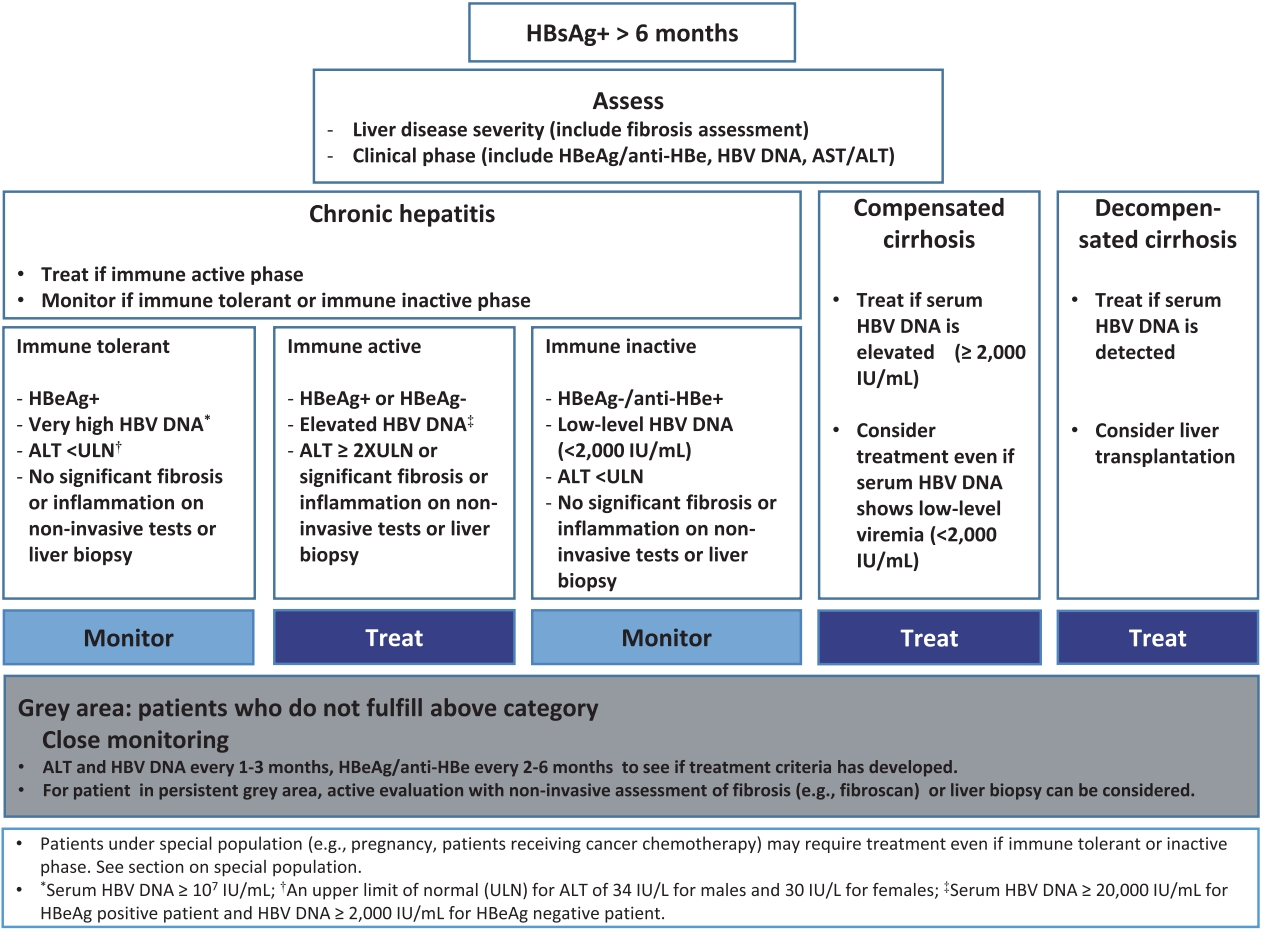



Kasl Clinical Practice Guidelines For Management Of Chronic Hepatitis B




Guidance For Design And Endpoints Of Clinical Trials In Chronic Hepatitis B Report From The 19 Easl sld Hbv Treatment Endpoints Conference Journal Of Hepatology
CSTE Position Statement(s) 16ID06;View select ePosters from The Liver Meeting® 19 in the following categories Acute Liver Failure and Artificial Liver Support Advanced Practice Providers Alcoholic Liver Diseases Clinical and Experimental Biliary Physiology, Transport, Cholangiocyte Biology, and Experimental Cholestasis Cell and Molecular Biology This twohour symposium explores chronic hepatitis B management in diverse populations Topics include the changing global epidemiology and comorbidity of chronic hepatitis B, how to apply current practice guidelines in "gray" zones, HCC prevention strategies beyond the guidelines, emerging curative therapies and current strategies in HCC surveillance for hepatitis B




Hepatitis B Screening Prevention Diagnosis And Treatment American Family Physician
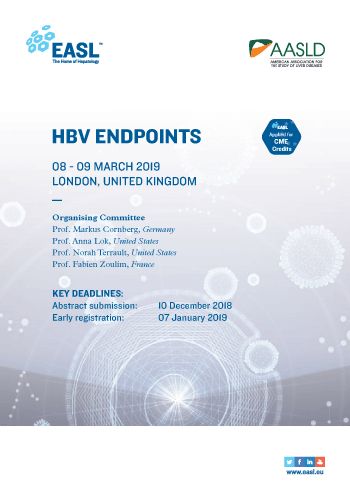



Hbv Endpoints Easl The Home Of Hepatology
(4) monitoring of untreated patients;Media Contacts Nola Gruneisen, AASLD, 571‐292‐3068 Lauren Martin, IDSA, () HCVguidelinesorg — a website developed by the American Association for the Study of Liver Diseases and the Infectious Diseases Society of America to provide uptodate guidance on the management of hepatitis C — was recently revised to reflect importantAnd (5) treatment of hepatitis B in special populations, including persons



Prevention Of Hbv Recurrence After Liver Transplant A Review




Guidance For Design And Endpoints Of Clinical Trials In Chronic Hepatitis B Report From The 19 Easl sld Hbv Treatment Endpoints Conference Sciencedirect
She has published more than 550 papers on viral hepatitis and liver diseases, including five editions of the American Association for the Study of Liver Diseases (AASLD) guidelines on "Hepatitis B" Dr Lok has mentored more than 50 residents, fellows, and faculty, many of whom are now full professors and heads of hepatology units 1 Discuss current treatments for hepatitis C and the importance of postcure follow up for certain patients 2 Review updated treatment guidelines for hepatitis B, with a focus on recommended agents 3 Briefly outline the current hepatitis A outbreak in the US and updated ACIP recommendations for vaccination of vulnerable populations(3) specialized virological and serological tests;




When And When Not To Treat Patients With Hbv Infection Clinical Gastroenterology And Hepatology




Hepatitis B Virus Advances In Prevention Diagnosis And Therapy Clinical Microbiology Reviews
Should adults and children with immunetolerant infection — high viral load and normal ALTs (alanine aminotransferase) — meaning no signs of liver damage–be treated with antivirals to decrease liverrelated AASLD 19 CRISPR Used to Silence Crucial Hepatitis B Gene Medscape Medical News , AASLD 19 Novel Procedure May Help Improve Metabolic DiseaseGuidance for design and endpoints of clinical trials in chronic hepatitis B Report from the 19 EASLAASLD HBV Treatment Endpoints Conference Hepatology 19 Nov 12 doi /hep Online ahead of print Authors Markus Cornberg 1




Comparison Of The Current International Guidelines On The Management Of Hcc Jhep Reports
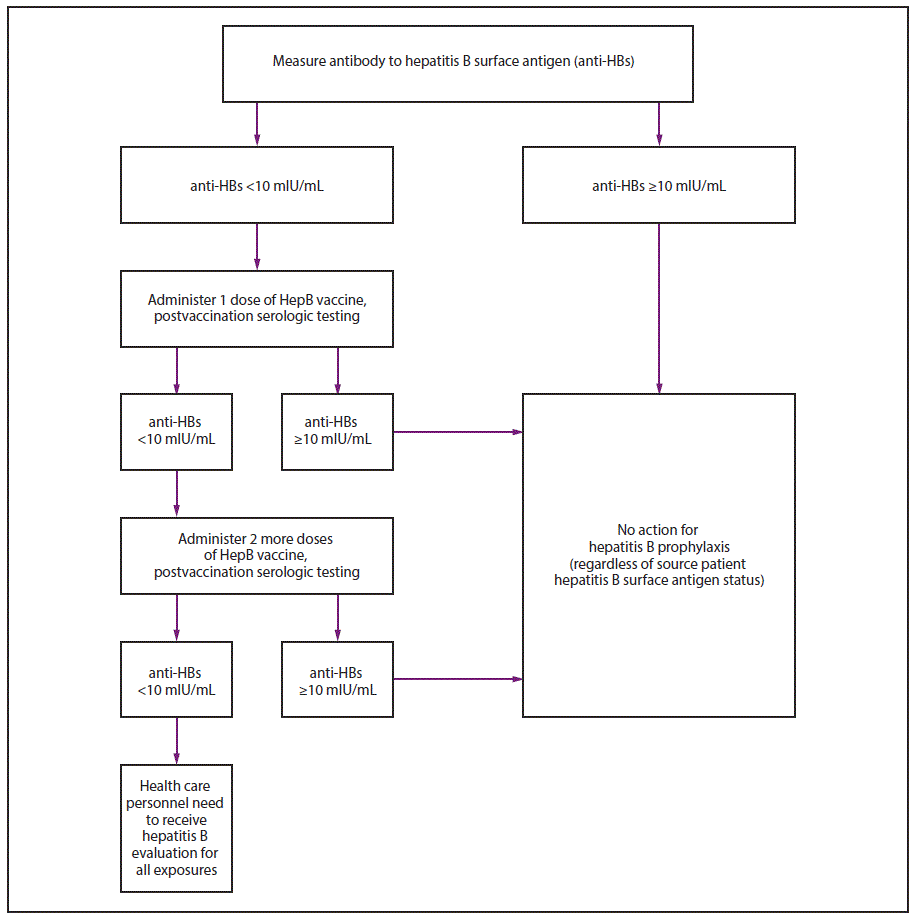



Prevention Of Hepatitis B Virus Infection In The United States Recommendations Of The Advisory Committee On Immunization Practices Mmwr
In contrast to AASLD, the 17 EASL Hepatitis B Guidelines recommend screening for HCC in selected patients with bridging fibrosis (Metavir stage F3) For these F3 patients, EASL advises risk group stratification (low, medium, and high) to aid in the decision to screen for HCC, based on individual assessment of known risk factors or locallyWard chairs the AASLD Task Force for Hepatitis Elimination Over a 13year tenure, Dr Ward directed the US CDC Division of Viral Hepatitis including hepatitis surveillance, prevention, and research At the national level, Dr Ward developed recommendations for hepatitis A and hepatitis B vaccination, hepatitis B and hepatitis C screening, andHepatology and viral hepatitis at University of California, San Francisco along with a concurrent master's degree in public health from University of California, Berkeley Dr Terrault has authored numerous original articles, reviews and book chapters on viral hepatitis, including the most recent AASLD Hepatitis B treatment Guidelines She is an
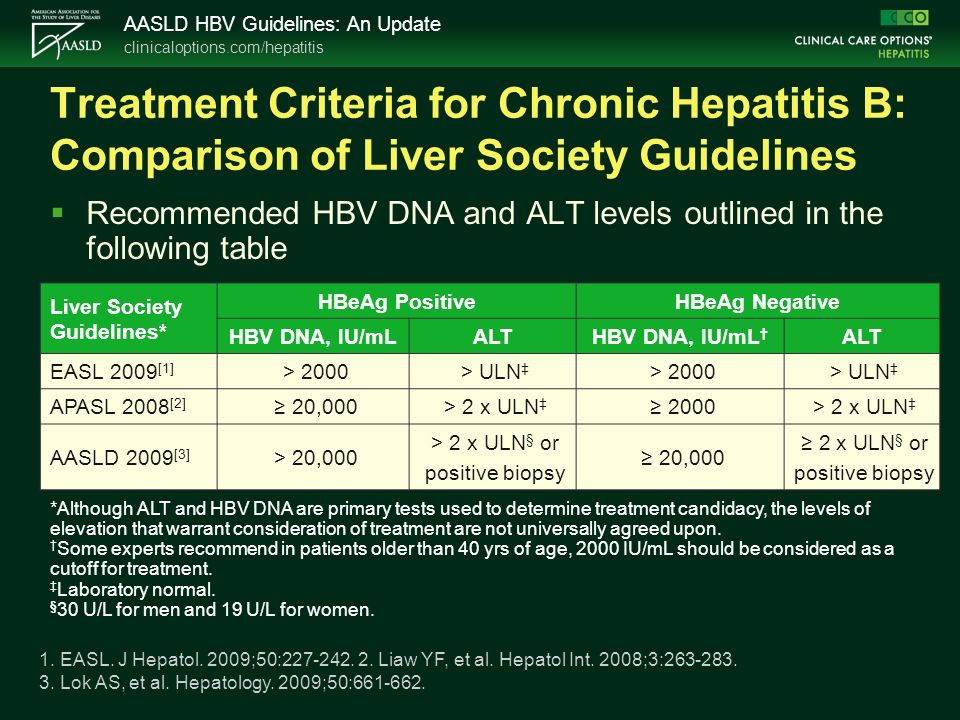



Understanding And Implementing The sld S Hbv Practice Guidelines Ppt Download



2
The prevalence of chronic hepatitis B (CHB) differs globally CHB is responsible for 30% of all deaths from cirrhosis and 40% from hepatocellular carcinoma The WHO developed guidelines in 15 on prevention, care, and treatment of chronic HBVAnd (4) the experience of the authors and independent reviewers with regard to NAFLD This practice guidance is intended for use by physicians and other health professionals As clinically appropriate, guidance statements should be tailored for individual patients1 Clin Gastroenterol Hepatol 19 Apr;17(5)e7 doi /jcgh2 Epub 18 Oct 13 Poor Adherence to Guidelines for Treatment of Chronic Hepatitis B Virus Infection at Primary Care and Referral Practices




Prevalence Of Chronic Hepatitis B Phases In Eritrean Patients A Laboratory Based Cross Sectional Study Bmc Gastroenterology Full Text




sld Recommendations For Treatment Of Chronic Hepatitis B Download Table
This AASLD 18 Hepatitis B Guidance is intended to complement the AASLD 16 Practice Guidelines for Treatment of Chronic Hepatitis B(1) and update the previous hepatitis B virus (HBV) guidelines from 09 The 18 updated guidance on chronic hepatitis B (CHB) includes (1) updates on treatment since the 16 HBV guidelines (notably the Read the latest articles, guidelines, and more from the AASLD publications HEPATOLOGY, Liver Transplantation, Clinical Liver Disease, and Hepatology Communications CURRENT SUBSCRIBERS to AASLD Journals can "pair" their device with their personal or institutional subscription to enjoy full access in this iPad edition SUBSCRIBE IN THE APP The Advisory Committee on Immunization Practices recommends hepatitis B vaccination for all medically stable infants weighing 2,000 g (4 lb, 6 oz) or more within 24 hours of birth, unvaccinated




sld Hbv Guidelines 18 Pdf




Updated Expert Guidance On The Management Of Chronic Hepatitis B Now Available Hiv Gov
Members and Returning Customers Enter your Username and Password to login Here you can register for upcoming events, apply for membership, update your profile, manage your speaker invitations and disclosure information If you haven't accessed your account in the past six months, you will be asked to verify and/or update your contact information Issues address in AASLD's updated hepatitis B treatment guidelines Should adults with immune active chronic hepatitis B be treated with antivirals to decrease liverrelated complications?AASLD The Future The first GRADEbased practice guidelines developed by the AASLD are published in this issue of HEPATOLOGY addressing treatment of chronic hepatitis B, accompanied by three de novo systematic reviews providing supporting evidence36 In marked contrast with prior guideline documents, this guideline is focused only on the treat
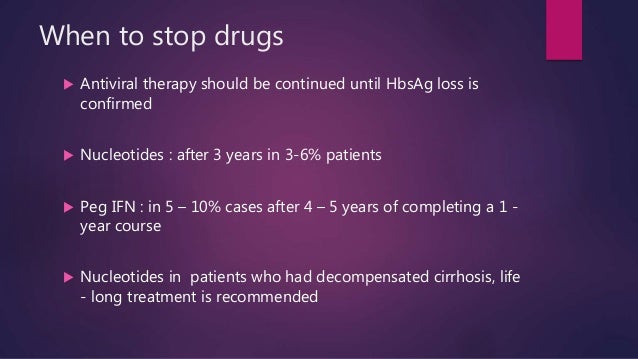



Hepatitis B Complete Overview And Recent Updates 19



Q Tbn And9gcqxlq7ehbjyurwnjmgnm9ovgfge4l59duyvu9d1ztybh5lu9dy Usqp Cau
Chronic hepatitis B viral (HBV) infection remains a significant global health problem Evidencebased guidelines are needed to help providers determine when treatment should be initiated, which medication is most appropriate, and when treatment can safely be stopped Guideline Dalekos GN, Koskinas J, Papatheodoridis GV Hellenic Association for the Study of the Liver Clinical Practice Guidelines Autoimmune hepatitis Ann Gastroenterol 19 JanFeb 32 (118 AASLDIDSA Hepatitis C Guidance • CID 1867 (15 November) • 1477 Hepatitis C Guidance 18 Update AASLDIDSA Recommendations for Testing, Managing, and Treating Hepatitis C Virus Infection AASLDIDSA HCV Guidance Panela (See the Commentary by Jhaveri etal on pages 1493–7)



3
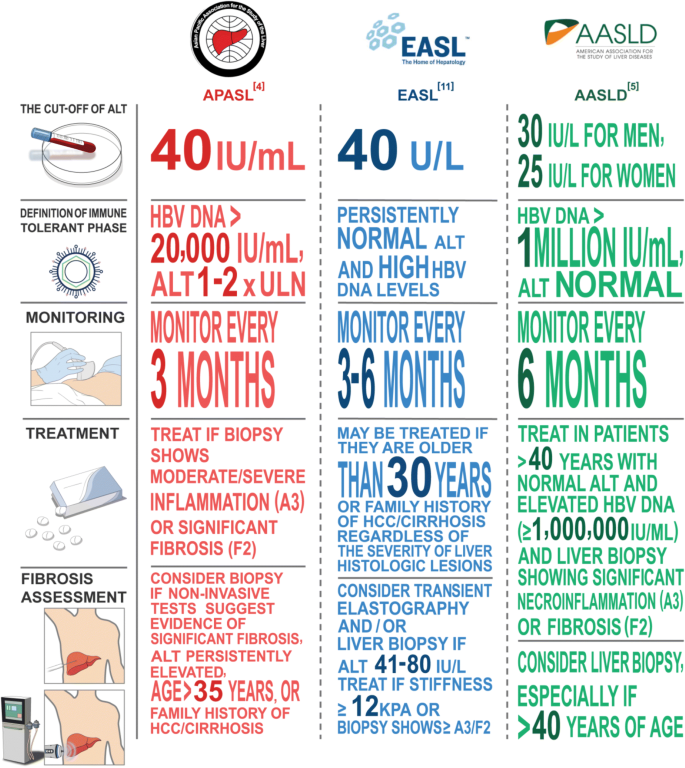



Unresolved Issues Of Immune Tolerance In Chronic Hepatitis B Springerlink
Guideline Dalekos GN, Koskinas J, Papatheodoridis GV Hellenic Association for the Study of the Liver Clinical Practice Guidelines Autoimmune hepatitis Ann Gastroenterol 19 JanFeb 32 (1Accepted *Hepatitis C guidance panel members and authors and their affiliations are listed at the end of the article Funding for the hepatitis C guidance project is provided exclusively by AASLD and IDSA The hepatitis C guidance panel members serve as uncompensated volunteers An update on treatment of genotype 1 chronic hepatitis C virus infection 11 practice guideline by the American Association for the Study of Liver Diseases Hepatology 11 Oct 54(4)
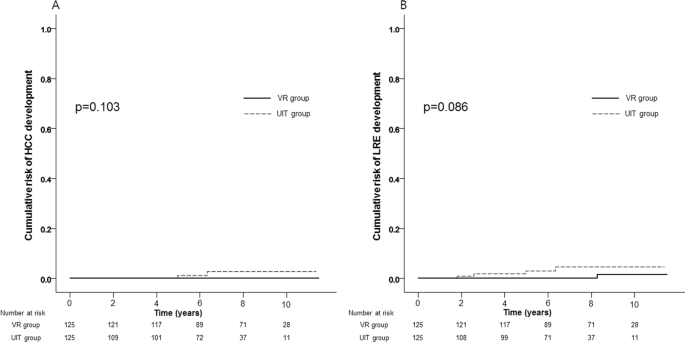



Comparison Between Chronic Hepatitis B Patients With Untreated Immune Tolerant Phase Vs Those With Virological Response By Antivirals Scientific Reports
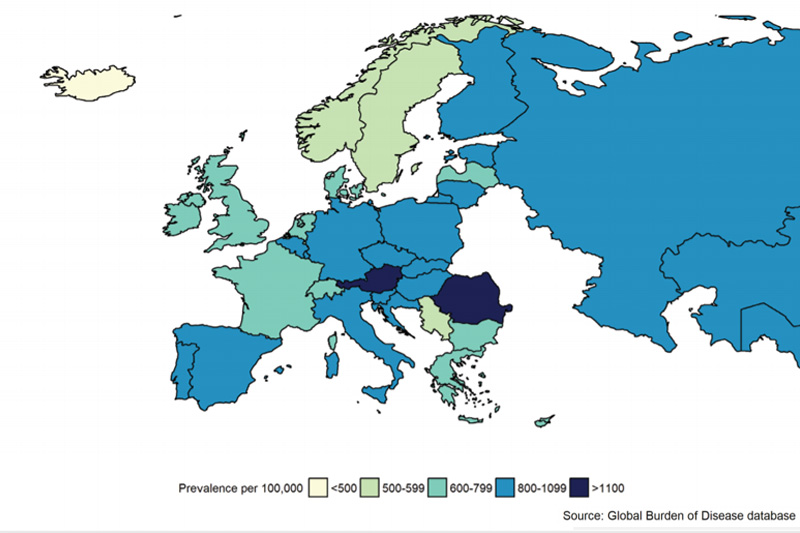



Viral Hepatitis Burden In Europe Easl The Home Of Hepatology
The AASLD congratulates Drs Harvey J Alter, Michael Houghton, and Charles M Rice, the recipients of the Nobel Prize in Physiology or Medicine Their groundbreaking research identified the Hepatitis C virus (HCV) – a bloodborne pathogen that causes acute and chronic hepatitis, cirrhosis, and liver cancerEASL 17 Clinical Practice Guidelines on the management of hepatitis B virus infectionq European Association for the Study of the Liver⇑ Summary Hepatitis B virus (HBV) infection remains a global public health problem with changing epidemiology due to several factors including vaccination policies and migration This Clinical Prac In contrast with the other bloodborne pathogens (hepatitis B virus and HIV) for which PEP is recommended, if HCV transmission does occur, currently available direct acting antiviral therapy is highly effective in eradicating both




sld Updates Chronic Hepatitis B Recommendations Practice Guidelines American Family Physician




Hepatitis B And Pregnancy Virologic And Immunologic Characteristics Joshi Hepatology Communications Wiley Online Library
AASLD Guidelines for Treatment of Chronic Hepatitis B Website View November 15 AASLD Guidelines for Treatment of Chronic Hepatitis B(link is external) Website View Three systematic reviews that were commissioned to support the guideline were published in January 16The Liver Meeting® 19 ePosters Hepatitis B 0454 SIMILAR RISK OF HEPATOCELLULAR CARCINOMA (HCC) DEVELOPMENT DURING LONGTERM ENTECAVIR (ETV) OR TENOFOVIR DISOPROXIL FUMARATE (TDF) THERAPY IN CAUCASIAN CHRONIC HEPATITIS B (CHB) PATIENTS Authors George Papatheodoridis, George Dalekos, Cihan Yurdaydin, Vana Sypsa, Florian vanAASLD 19 Triple Therapy With Lonafarnib, Ritonavir, and PegInterferon Lambda 1a Appears Promising for Hepatitis Delta Virus Infection PracticeUpdate Editorial Team AASLD AASLD 19 Transient Elastography May Help in the Assessment of Allograft Quality in Deceased Liver Donors



Diagnosis And Antiviral Therapy Of Hepatitis B And D Hungarian Consensus Guideline Central European Journal Of Gastroenterology And Hepatology
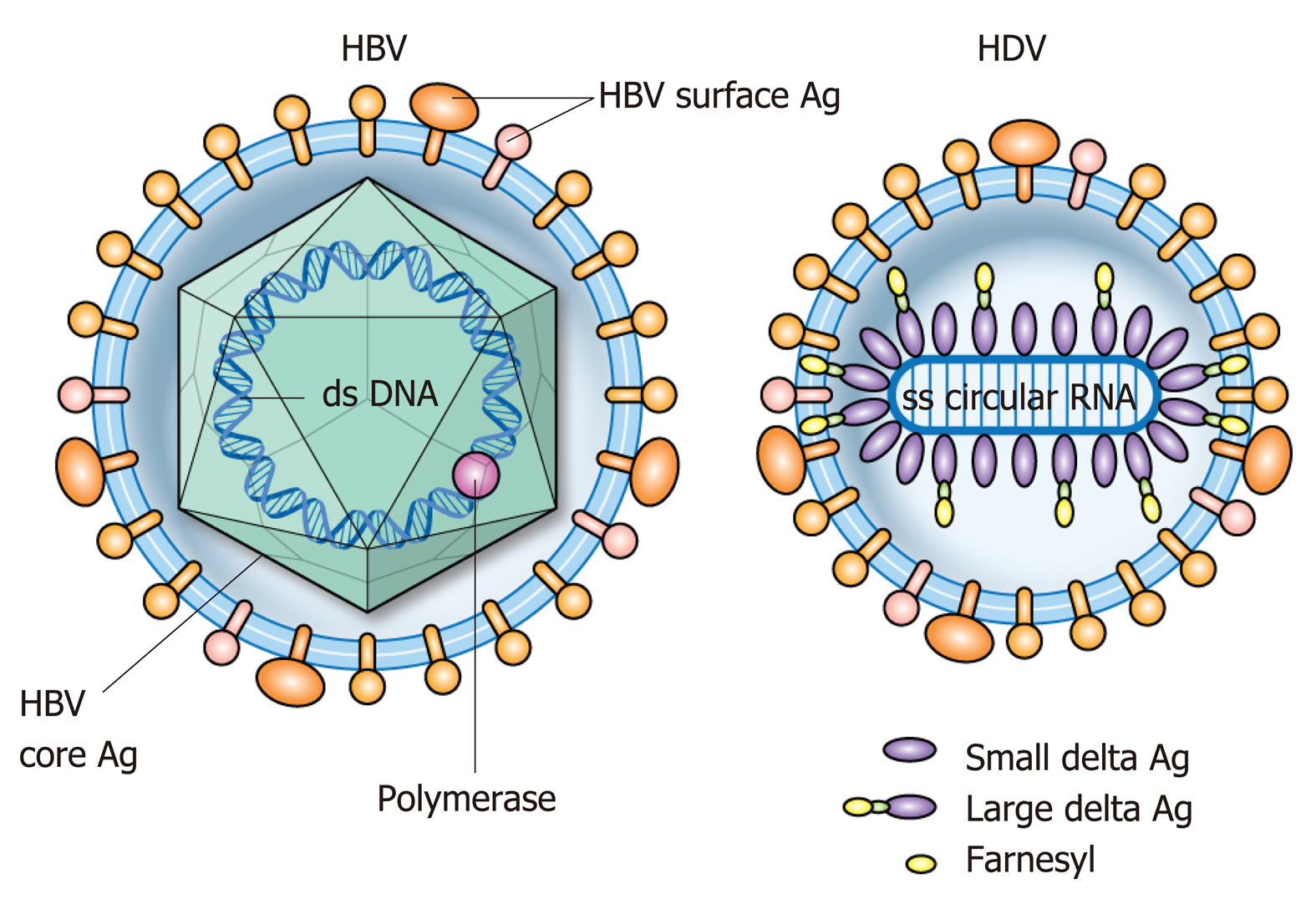



Chronic Hepatitis Delta A State Of The Art Review And New Therapies
Hepatitis B Research Network were scored for inflammation, fibrosis and NAFLD n Those with steatohepatitis had an adjusted risk ratio of 16 for stage 3 or higher fibrosis n Important to screen for and address components of metabolic syndrome in patients with CHB to decrease liver disease progression Khallili et al Ab 162 AASLD 19Hepatitis B virus (HBV) infection remains a global public health problem with changing epidemiology due to several factors including vaccination policies and migration This Clinical Practice Guideline presents updated recommendations for the optimal management of HBV infection Chronic HBV infectio
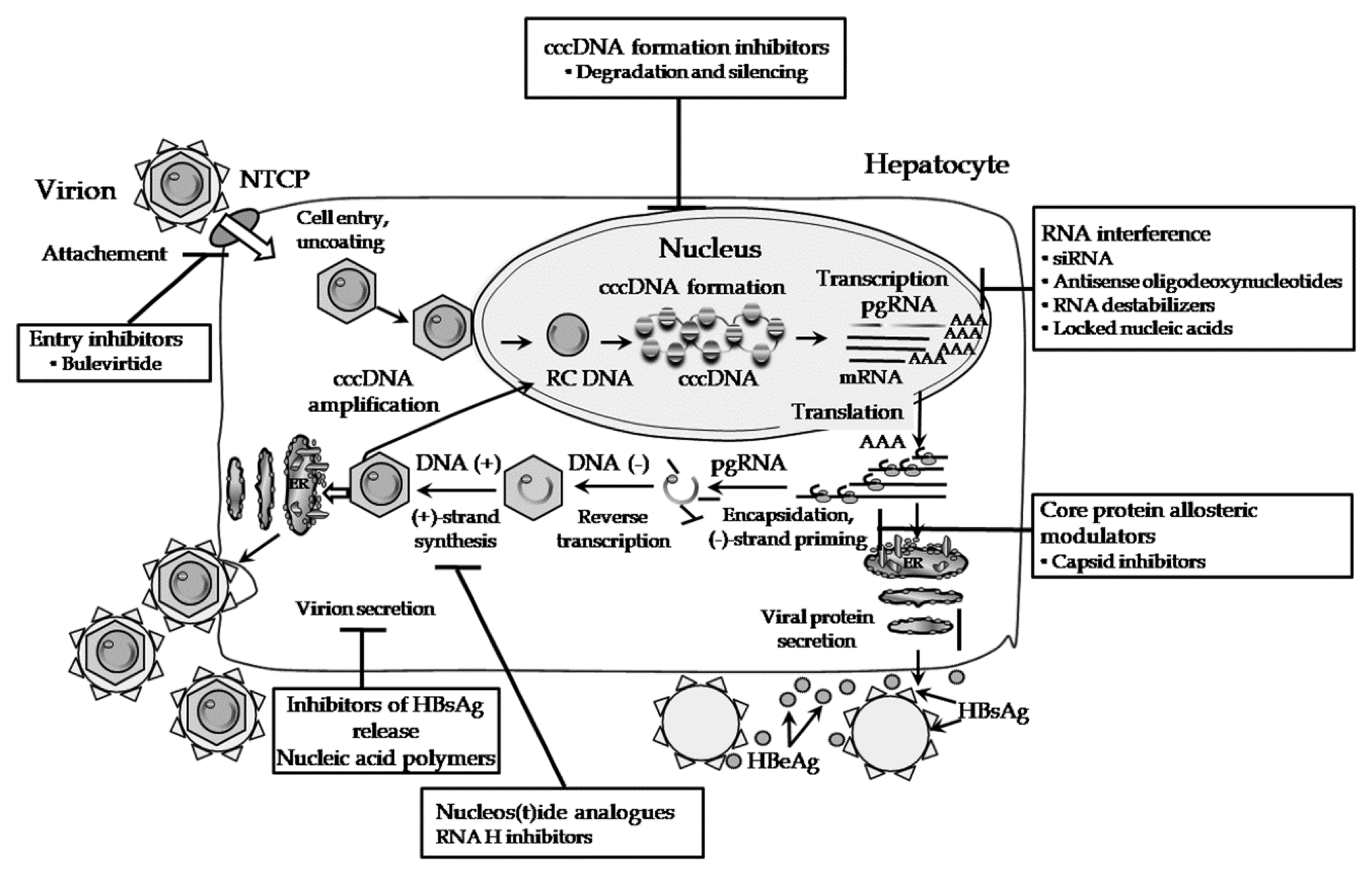



Jcm Free Full Text New Approaches To The Treatment Of Chronic Hepatitis B Html




Pdf South African Guideline For The Management Of Chronic Hepatitis B 13 Semantic Scholar




Hepatitis B Screening Prevention Diagnosis And Treatment American Family Physician




19 Chinese Clinical Guidelines For The Management Of Hepatocellular Carcinoma Updates And Insights Xie Hepatobiliary Surgery And Nutrition




Guidance For Design And Endpoints Of Clinical Trials In Chronic Hepatitis B Report From The 19 Easl sld Hbv Treatment Endpoints Conference Markus Ppt Download
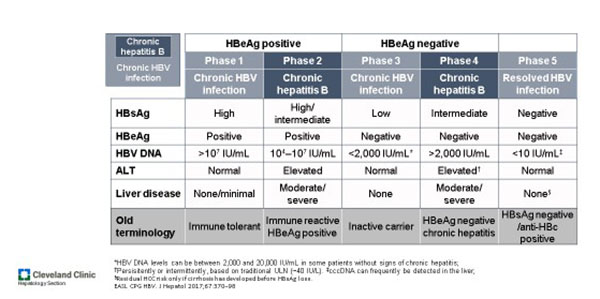



Hepatitis B Cleveland Clinic




Core Concepts Hepatitis B Coinfection Co Occurring Conditions National Hiv Curriculum




Pdf South African Guideline For The Management Of Chronic Hepatitis B 13 Semantic Scholar




sld Guidelines




Update On Prevention Diagnosis And Treatment Of Chronic Hepatitis B sld 18 Hepatitis B Guidance Terrault 18 Hepatology Wiley Online Library
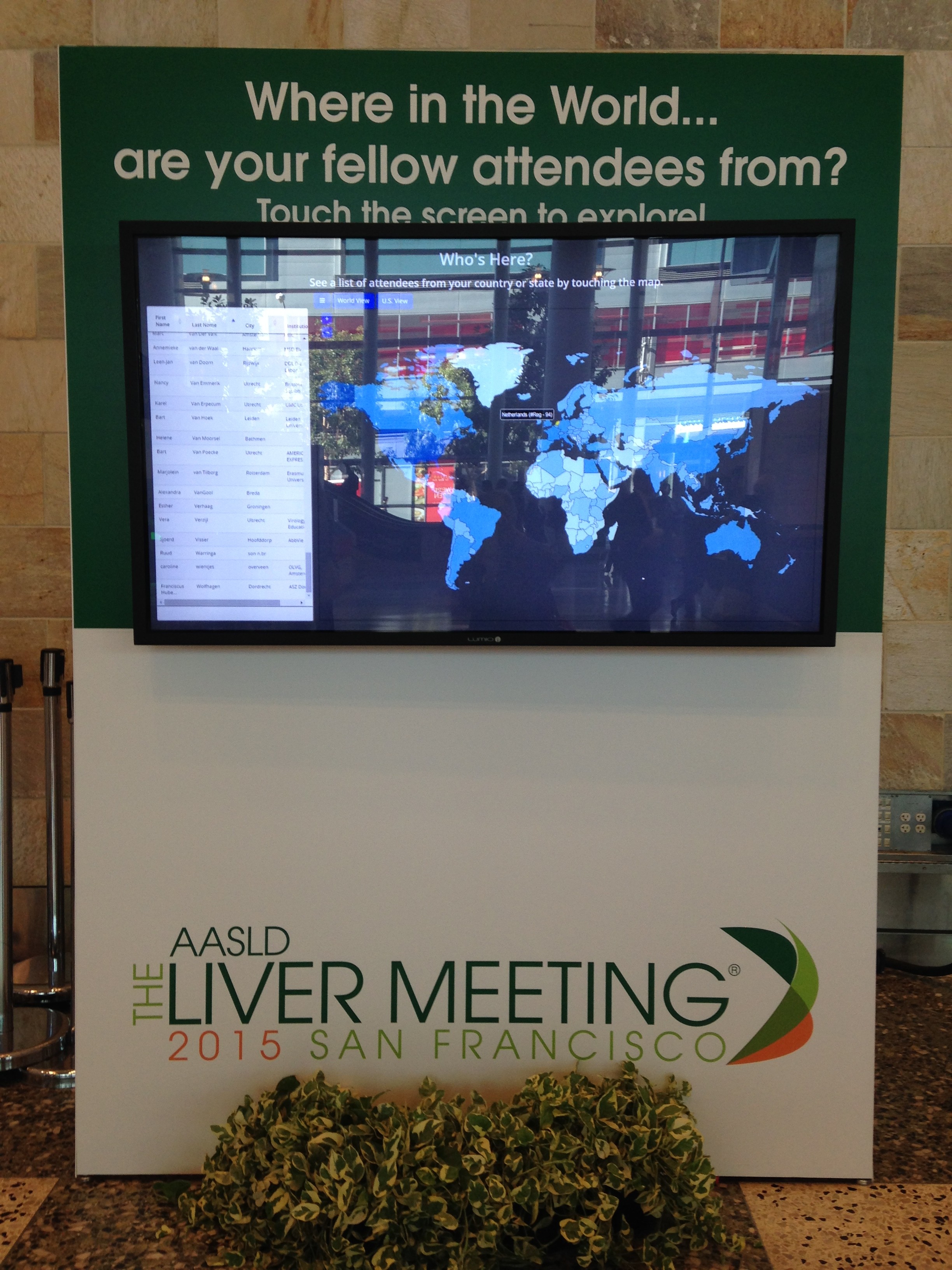



New Hepatitis B Treatment Guidelines Revealed At sld 15 Conference Hepatitis B Foundation




Hepatitis B Screening Prevention Diagnosis And Treatment American Family Physician
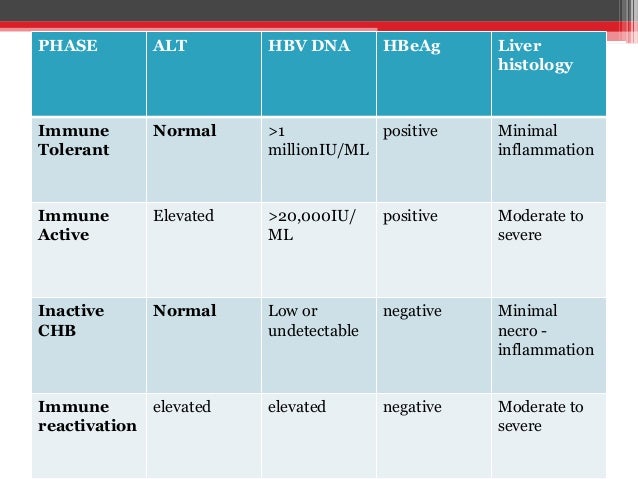



sld Guidelines For Diagnosis Treatment Of Chronic Hepatitis B




Understanding And Implementing The sld S Hbv Practice Guidelines Ppt Download
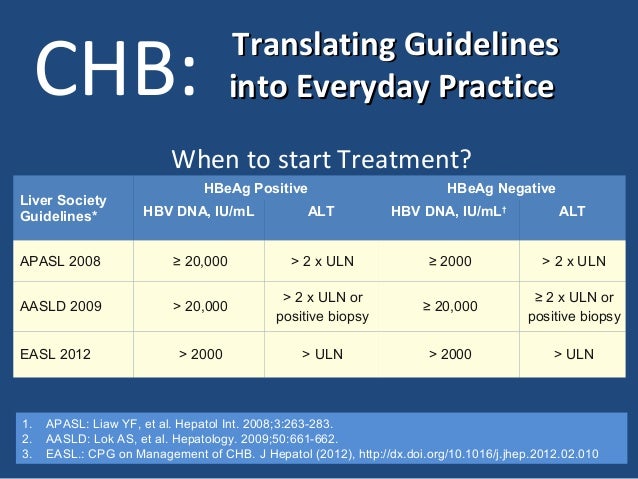



sld Guidelines Hepatitis B




Core Concepts Hepatitis B Coinfection Co Occurring Conditions National Hiv Curriculum




sld Recommendations For Treatment Of Chronic Hepatitis C Download Table



Diagnosis And Antiviral Therapy Of Hepatitis B And D Hungarian Consensus Guideline Central European Journal Of Gastroenterology And Hepatology




Guidance For Design And Endpoints Of Clinical Trials In Chronic Hepatitis B Report From The 19 Easl sld Hbv Treatment Endpoints Conference Markus Ppt Download




Con All Patients With Immune Tolerated Hepatitis B Virus Do Not Need To Be Treated Attar Clinical Liver Disease Wiley Online Library
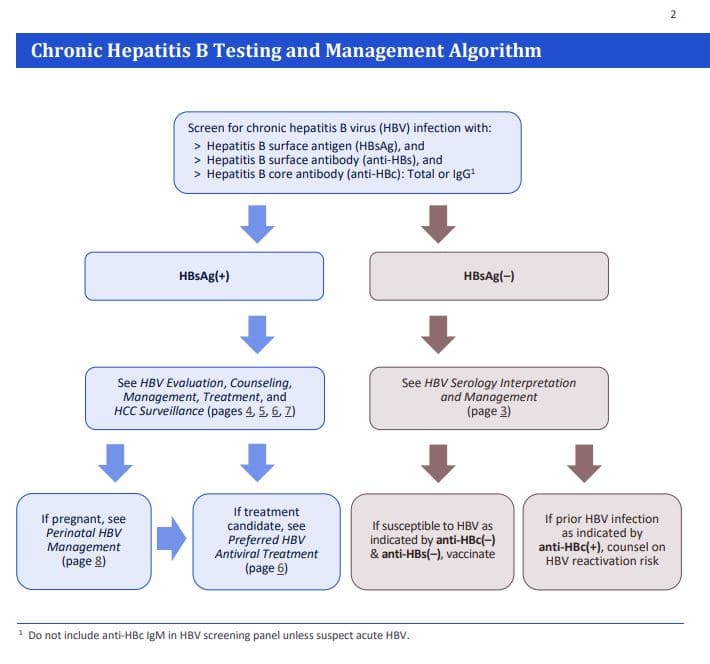



New Resource Guide To Hepatitis B Management For Primary Care Providers Hepatitis B Foundation




Pdf Importance Of Fibrosis Stage In Starting Treatment For Hepatitis B Virus Hbv Are The Updated Casl Ammi Hbv Clinical Algorithms Lost In Translation



South African Guideline For The Management Of Chronic Hepatitis B 13 Spearman South African Medical Journal




Easl 17 Clinical Practice Guidelines On The Management Of Hepatitis B Virus Infection Journal Of Hepatology




Practice Guidelines sld




Cldf



Q Tbn And9gcqkchn Jjpqs9ezljmmawoolkrcgp Io4rht9opjhw Usqp Cau




Comparison Of Current Clinical Practice Guidelines For Chronic Download Scientific Diagram




Comparison Of Different Hepatitis B Guidelines Sethy Pk Goenka Mk Hep B Annual




Management Algorithm For Interrupting Mother To Child Transmission Of Hepatitis B Virus Clinical Gastroenterology And Hepatology




Pdf Comparison Of Clinical Practice Guidelines For The Management Of Chronic Hepatitis B When To Start When To Change And When To Stop
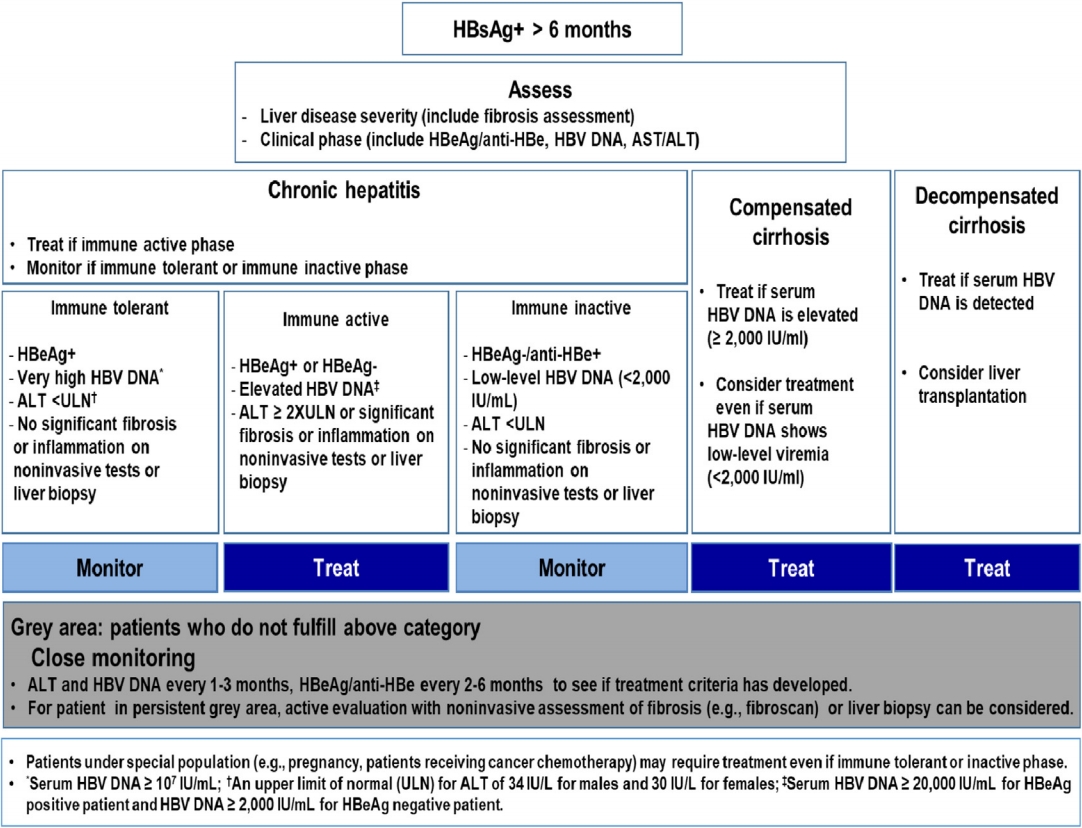



Updated Treatment Of Chronic Hepatitis B




Hepatitis C Guidance 19 Update American Association For The Study Of Liver Diseases Infectious Diseases Society Of America Recommendations For Testing Managing And Treating Hepatitis C Virus Infection Ghany




Practice Guidelines sld



Diagnosis And Antiviral Therapy Of Hepatitis B And D Hungarian Consensus Guideline Central European Journal Of Gastroenterology And Hepatology



Hepatitis B Chapter 4 Yellow Book Travelers Health Cdc




Comprehensive 18 sld Guidance For Chronic Hepatitis B Gutsandgrowth




ไวร สต บอ กเสบบ Hepatitis B Infection สมาคมโรคต บแห งประเทศไทย
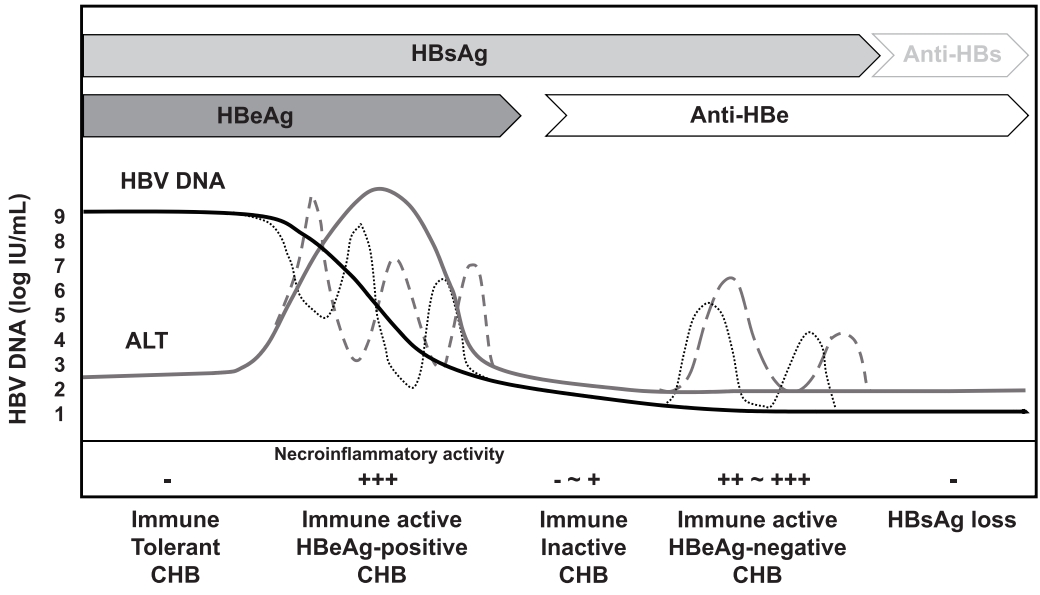



Clinical And Molecular Hepatology Clin Mol Hepatol Cmh




sld Guidelines




sld Guidelines For Diagnosis Treatment Of Chronic Hepatitis B



1




The Who Guidelines For Chronic Hepatitis B Fail To Detect Half Of The Patients In Need Of Treatment In Ethiopia Journal Of Hepatology



Diagnosis And Antiviral Therapy Of Hepatitis B And D Hungarian Consensus Guideline Central European Journal Of Gastroenterology And Hepatology
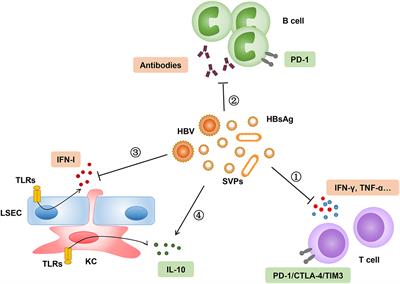



Frontiers Toward A Functional Cure For Hepatitis B The Rationale And Challenges For Therapeutic Targeting Of The B Cell Immune Response Immunology




Easl 17 Clinical Practice Guidelines On The Management Of Hepatitis B Virus Infection Journal Of Hepatology
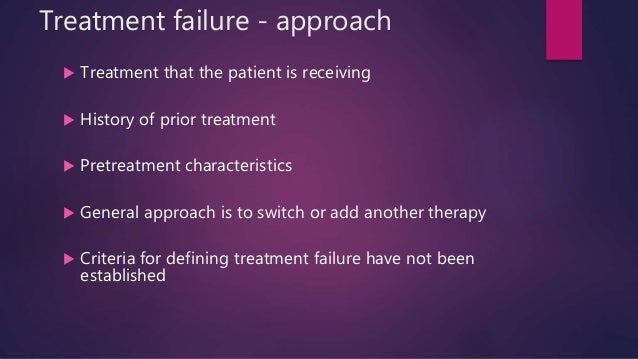



Nrfkyat6bgs3jm
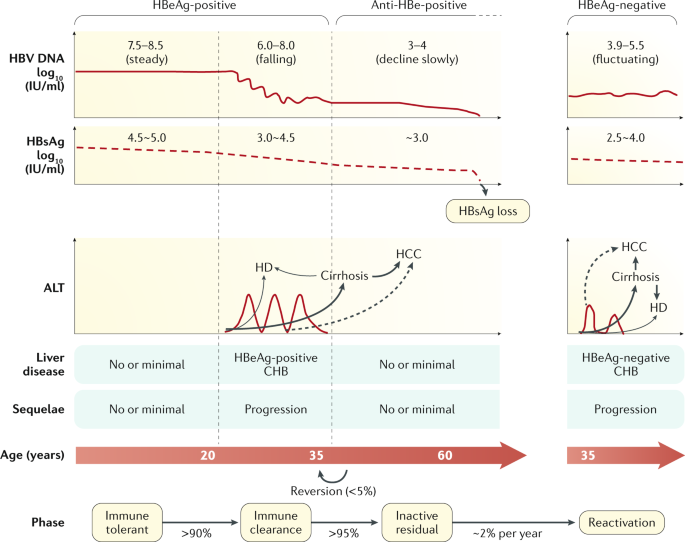



Clinical Utility Of Hbv Surface Antigen Quantification In Hbv E Antigen Negative Chronic Hbv Infection Nature Reviews Gastroenterology Hepatology
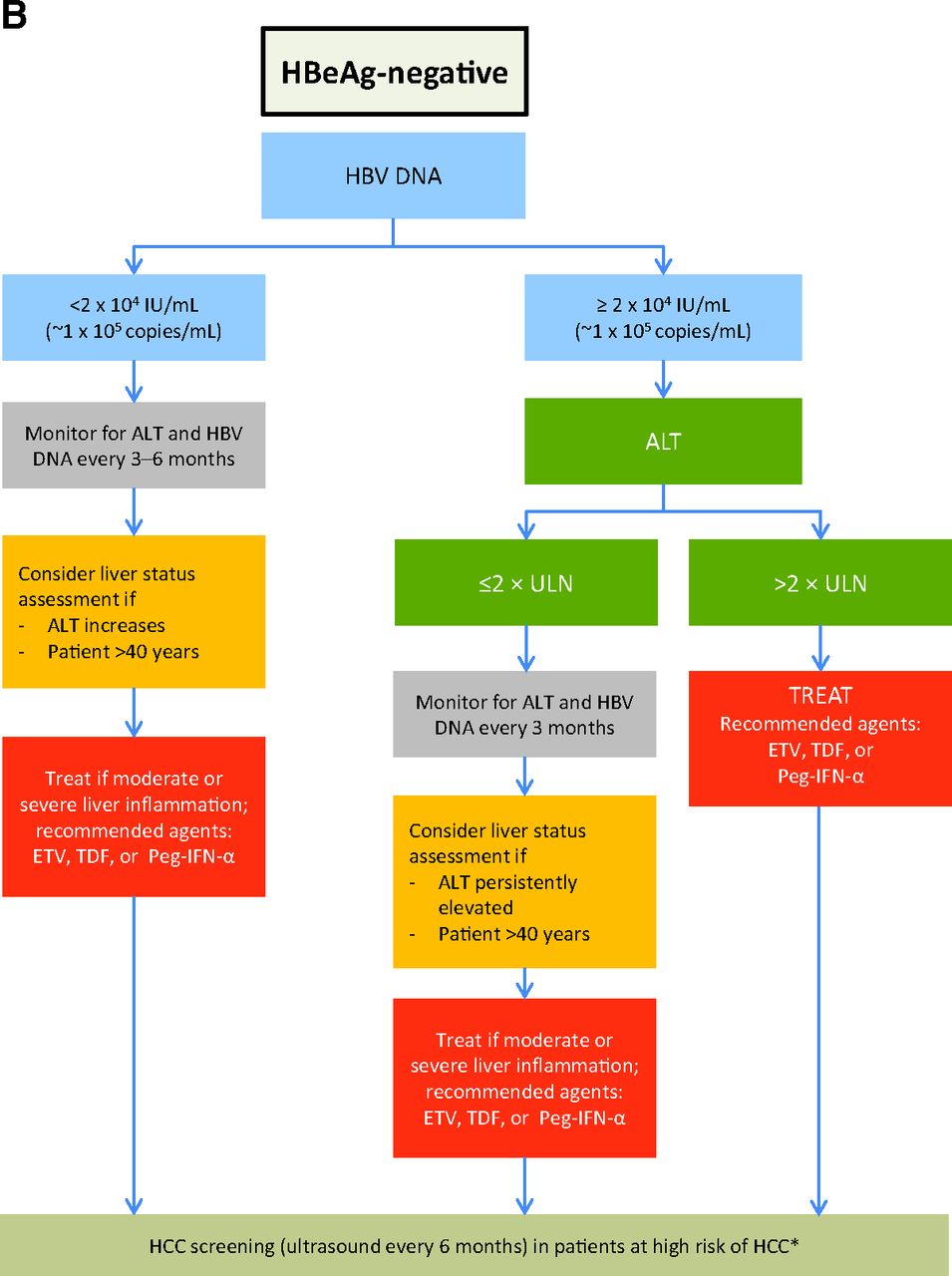



sld Guidelines Hepatitis B



Www sld Org Sites Default Files 19 06 sld 18 Hcc Guidance On Diagnosis 2c Staging And Management Hep 281 29 Pdf




Addressing The Global Burden Of Hepatitis B Virus While Developing Long Acting Injectables For The Prevention And Treatment Of Hiv The Lancet Hiv




Core Concepts Hepatitis B Coinfection Co Occurring Conditions National Hiv Curriculum
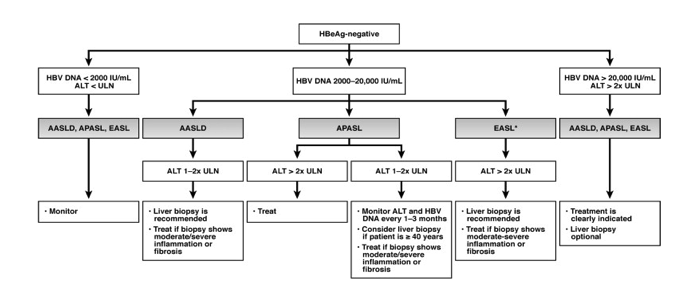



Management Of Hepatitis B Our Practice And How It Relates To The Guidelines
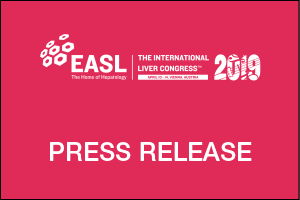



Tenofovir Associated With A Lower Risk Of Hepatocellular Carcinoma Than Entecavir In Large Hepatitis B Study The International Liver Congress 19 Easl 19
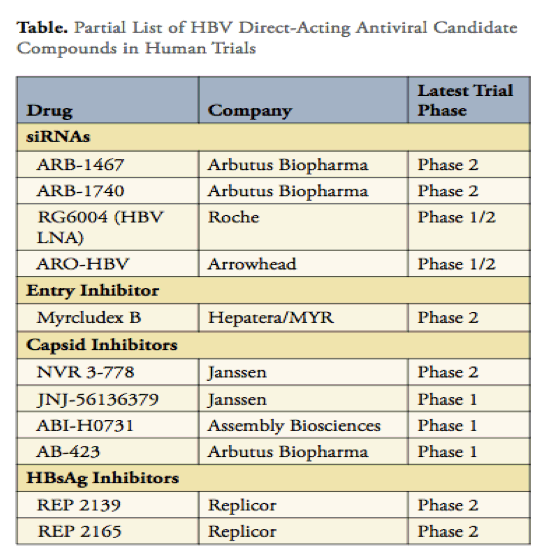



The Push Is On To Cure Hepatitis B A Long Overlooked Scourge Of Millions Emerging Therapies Toward A Functional Cure For Hepatitis B Virus Infection
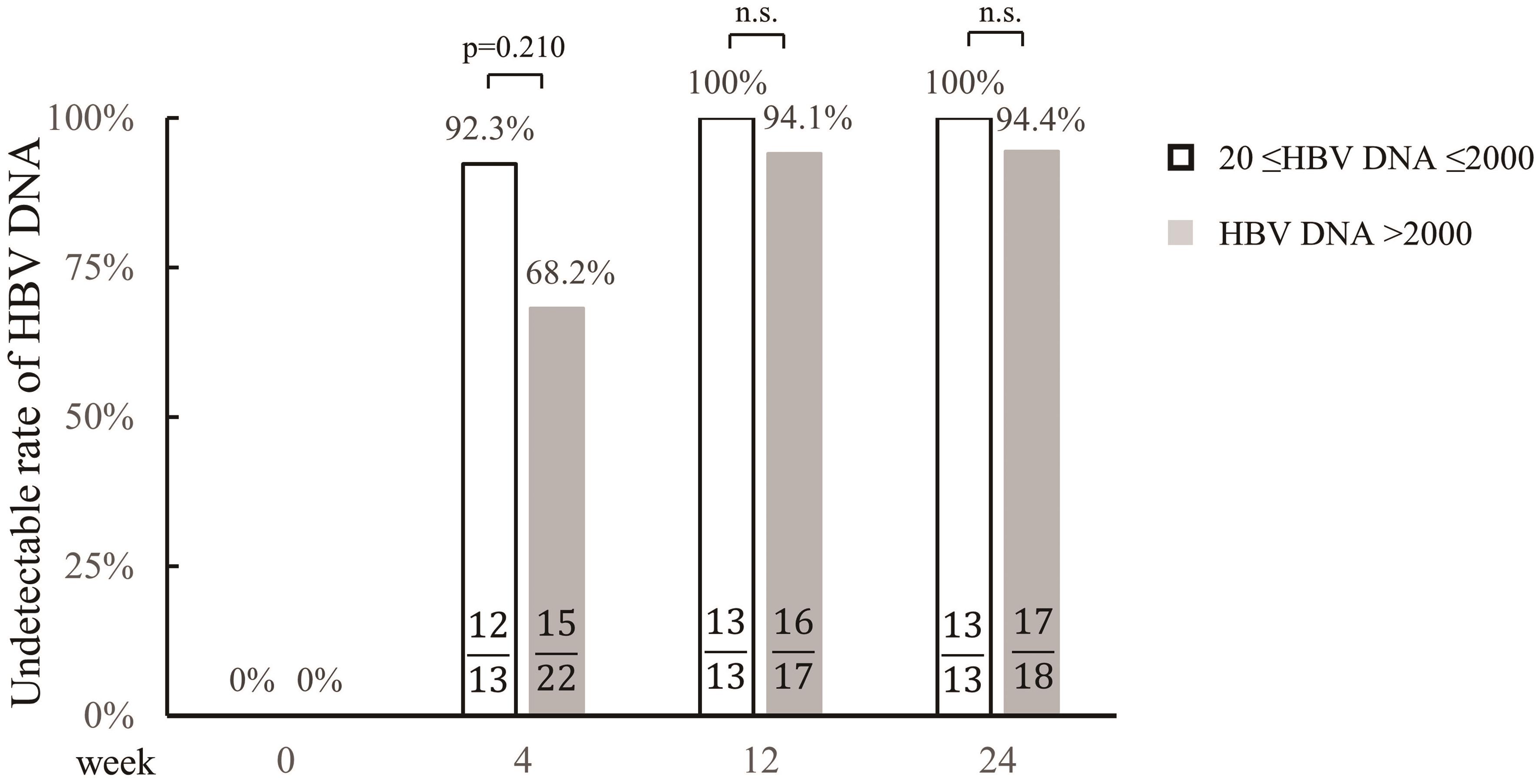



Effectiveness Of Tenofovir Alafenamide In Chronic Hepatitis B Patients With Normal Alaine Aminotransferase And Positive Hepatitis B Virus Dna




Practice Guidelines sld




Hepatitis B Virus From Diagnosis To Treatment




Participants Eligible For Treatment Based On The 18 sld Guideline Download Scientific Diagram




Asian Consensus Recommendations On Optimizing The Diagnosis And Initiation Of Treatment Of Hepatitis B Virus Infection In Resource Limited Settings Gane Journal Of Viral Hepatitis Wiley Online Library




Hepatitis B Virus Infection And The Progress Toward Its Elimination The Journal Of Pediatrics




Evolving Options For Hbv Therapy Navigating The New




Highlights Of The New Who Chronic Hepatitis B Guidelines Hepatitis B Foundation



sld Guidelines
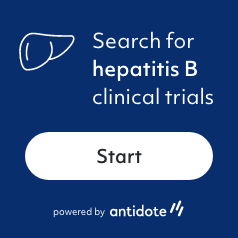



Clinical Guidelines Hepatitis B Foundation
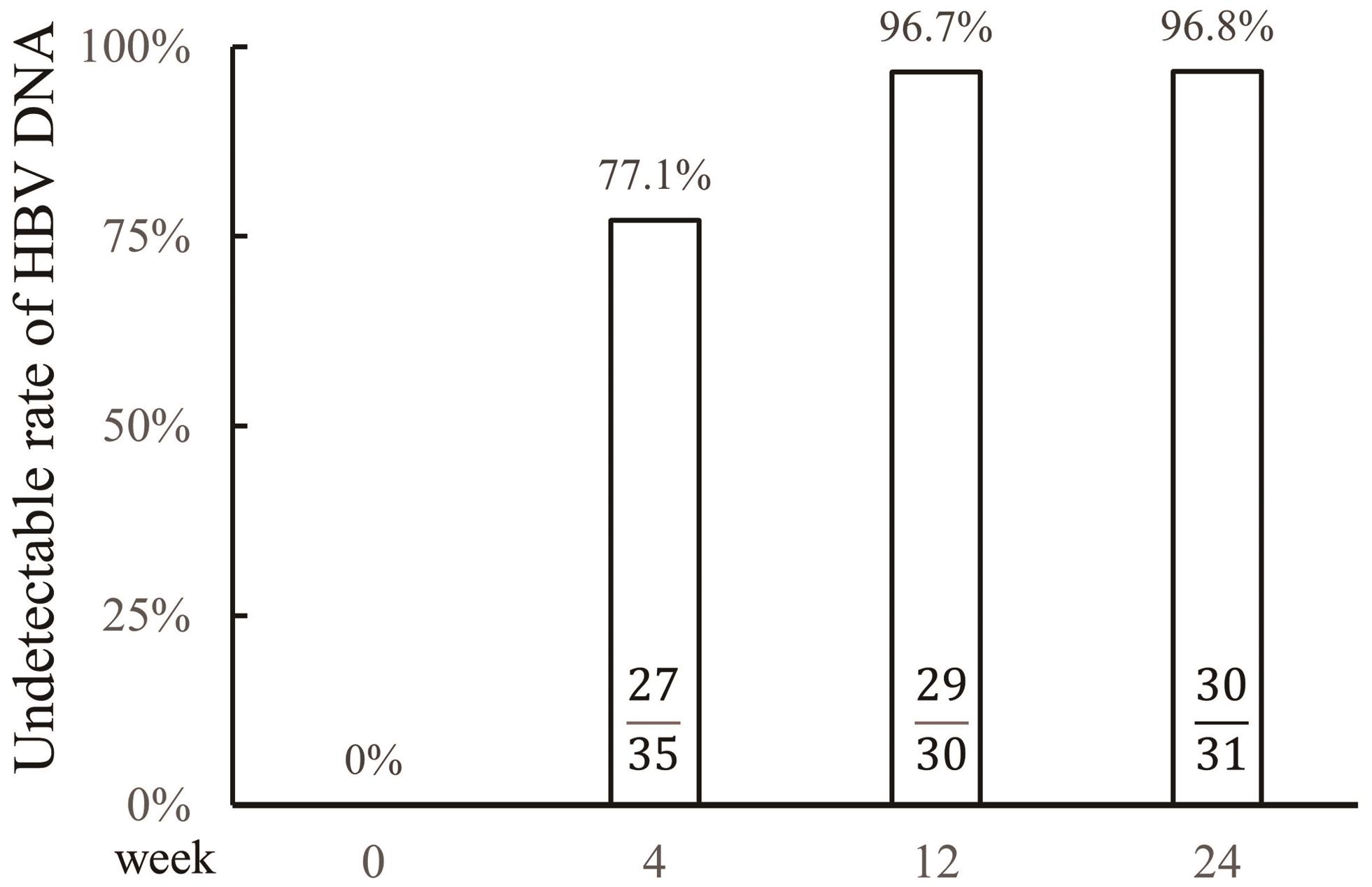



Effectiveness Of Tenofovir Alafenamide In Chronic Hepatitis B Patients With Normal Alaine Aminotransferase And Positive Hepatitis B Virus Dna
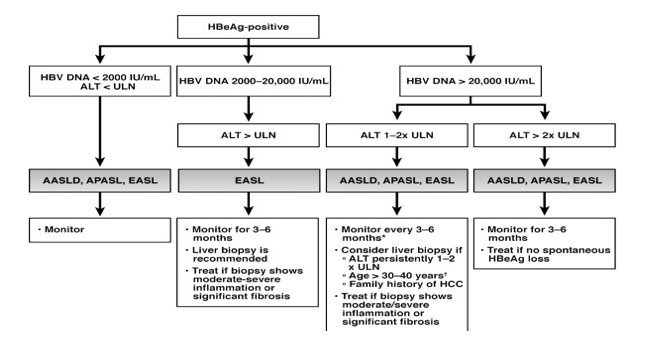



Management Of Hepatitis B Our Practice And How It Relates To The Guidelines



Diagnosis And Antiviral Therapy Of Hepatitis B And D Hungarian Consensus Guideline Central European Journal Of Gastroenterology And Hepatology
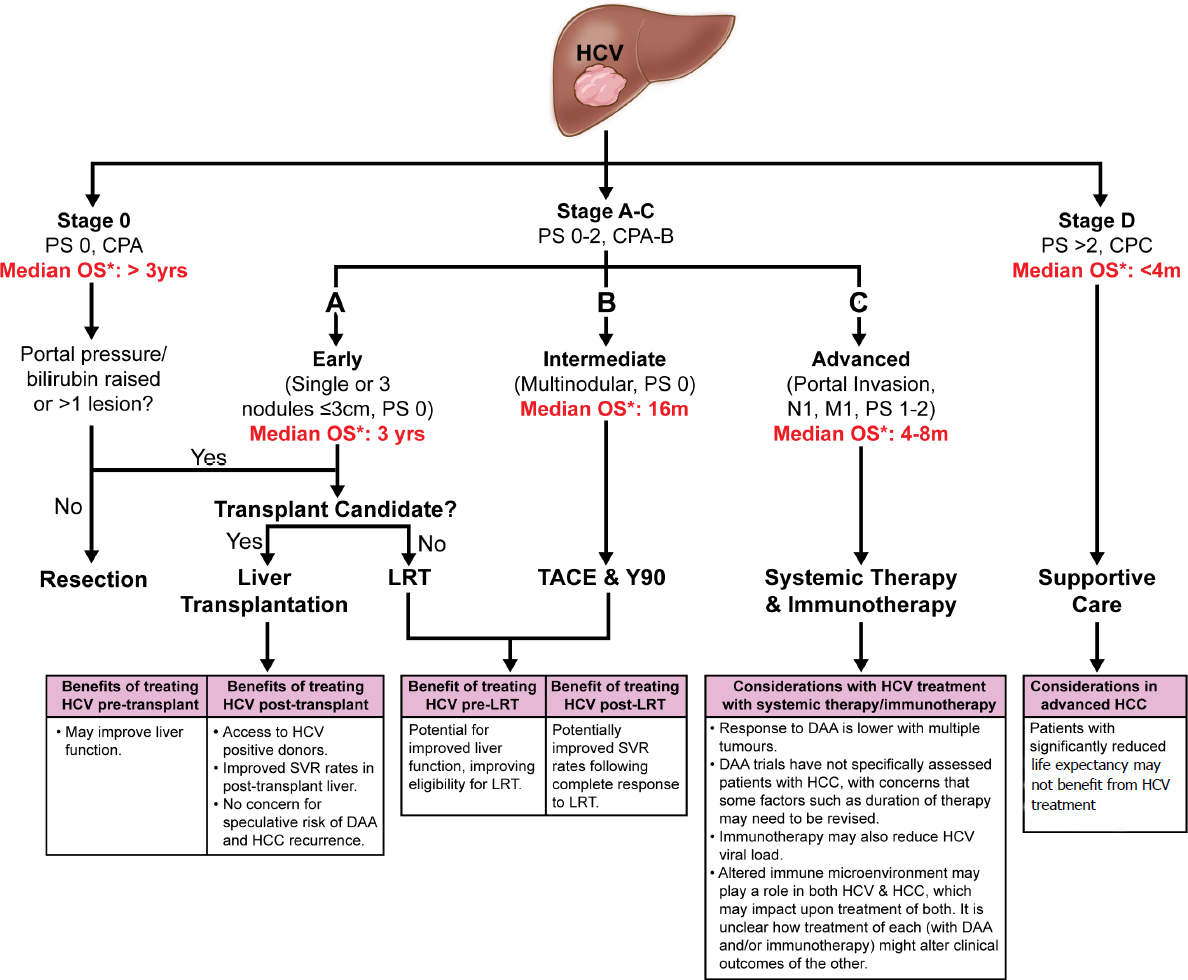



Management Of Concomitant Hepatocellular Carcinoma And Chronic Hepatitis C A Review




Poor Adherence To Guidelines For Treatment Of Chronic Hepatitis B Virus Infection At Primary Care And Referral Practices Clinical Gastroenterology And Hepatology
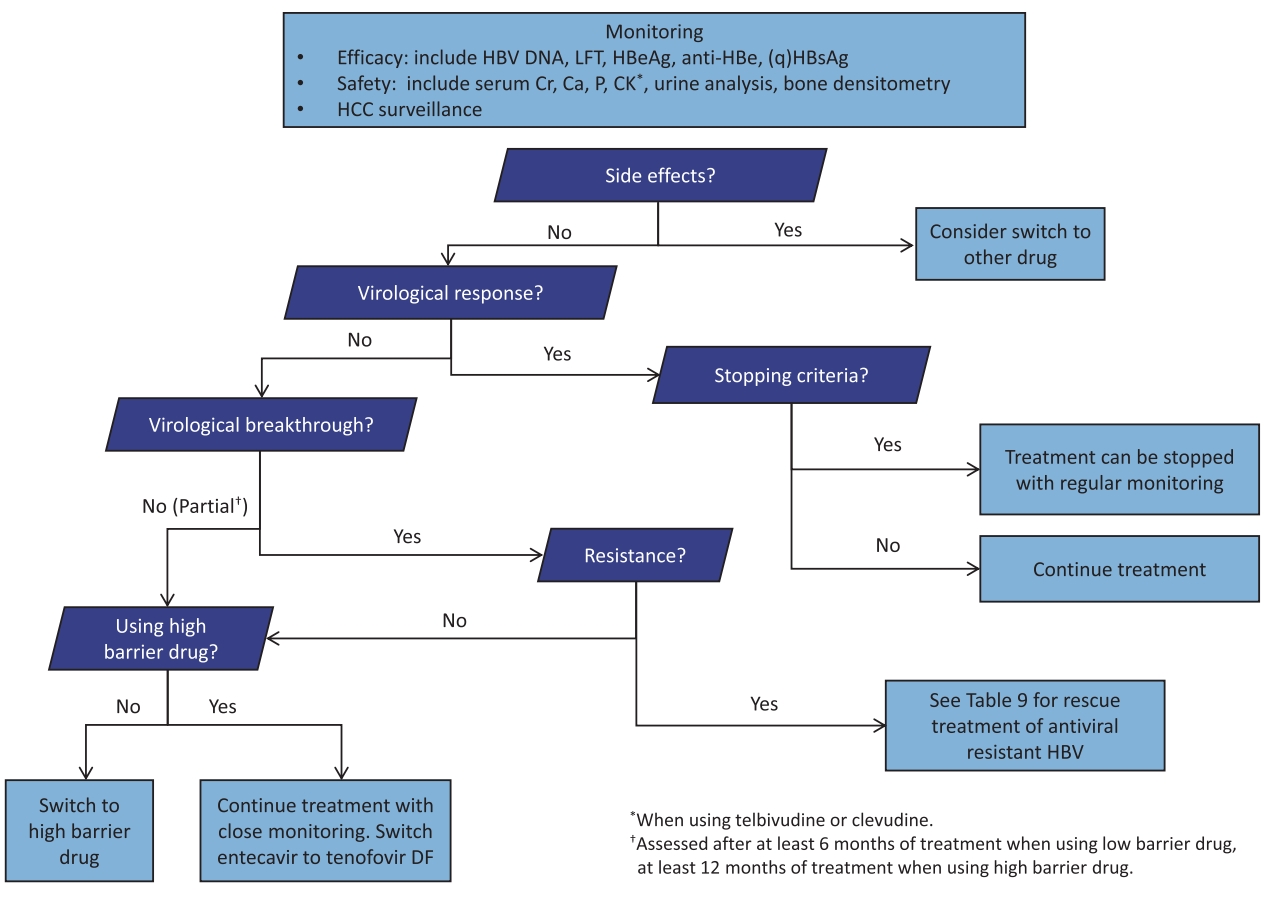



Kasl Clinical Practice Guidelines For Management Of Chronic Hepatitis B
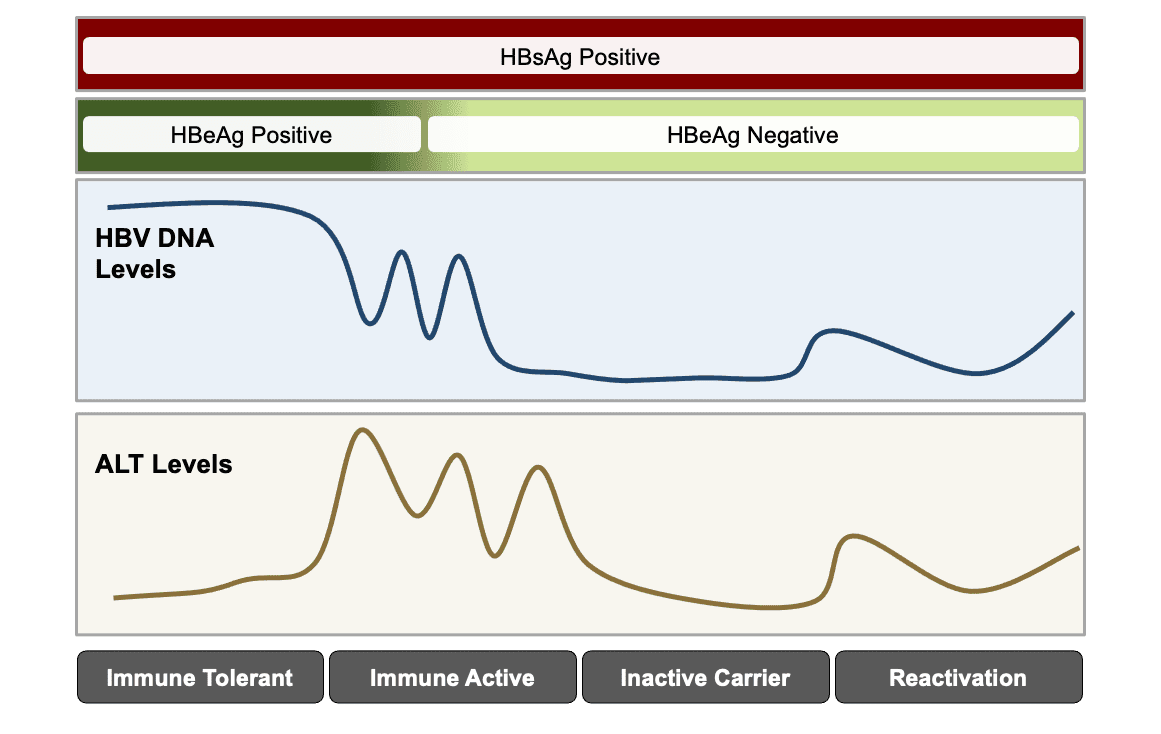



Core Concepts When To Initiate Hbv Treatment Treatment Of Hbv Hepatitis B Online




Easl 17 Clinical Practice Guidelines On The Management Of Hepatitis B Virus Infection Journal Of Hepatology




sld Hbv Guidelines 18 Pdf




sld Guidelines Hepatitis B




sld Guidelines



0 件のコメント:
コメントを投稿